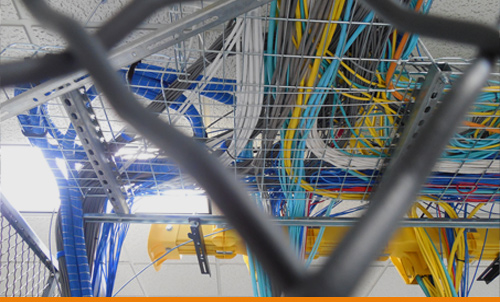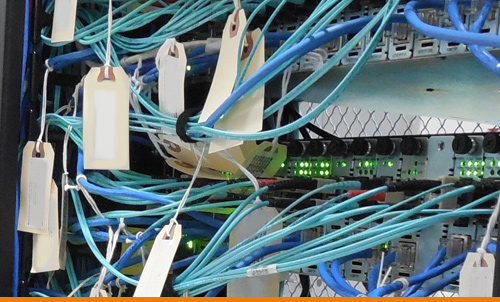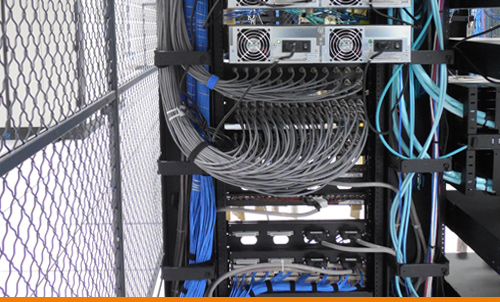Dos and Don’ts of Negotiating Peering Agreements
August 13, 2015Peering is one of the quickest ways to boost network efficiency for your enterprise.
You can save a boatload of money through Internet Peering. It cuts the cost of transit up to 50%, decreases latency [time delay on signal], and improves the speed of your network. Peering partnerships are very beneficial, but there are key questions to ask when crafting your Peering Agreement.
Think Next – What to Think About First When Drafting Peering Agreements
DO:
- Gather the information you need to present your case before decision makers
- Consider your long-term goals before forming a Peering partner relationship
- Determine your needs as well as your partner’s
- Look at trends in large and small Internet bandwidth users
- Look at your current traffic patterns
- Ask for a cost breakdown and analysis
- Ask about administrative costs
- Talk to a third party expert who can show you how and where you can save money
- Document the deal clearly to avoid misunderstandings
Don’t:
- Buy more than you need
- Create a Peering Agreement without the help of a consultant
- Lock yourself in with one Data Center provider, use an open Peering Exchange
Types of Internet Peering Exchanges
Essentially, you can choose from 2 varieties of Peering—Private and Public.
- In a Private Exchange, two or more entities—often within the same data center infrastructure—set up a Peering agreement. They don’t necessarily involve an exchange, and the entities may not appear on a list.
- In a Public Exchange, you’ll be able to see other members before you join. Further, once you’re part of the exchange, you are free to set up a Peering relationship with any of the other members. The New York International Internet Exchange (NYIIX) is a Public Peering exchange.
The exchange is responsible for infrastructure. You pay a one-time setup fee and a low monthly fee based on the size of your port.
All Peering Relationships Are Not Equal
While you’re boosting efficiency in general, it’s also important to remember that Peering partners will add or subtract from that improvement depending on your company’s unique needs.
So, before you lock into a Peering Agreement, it’s important to consider both the advantages and the limitations of each partner.
Depending on a partner’s use footprint, you’ll need to weigh how their traffic patterns coincide or differ with yours.
Statistical Data For Internet Use
Companies that stream data, such as Netflix, are definitely Peering. Top streaming companies—especially those offering HD—Peer to boost video quality and delivery speed. No one wants their movie to skip or take forever to load.
What We’re Streaming
The 2015 Sandvine Intelligent Broadband Networks’ Global Internet Phenomena: Latin America & North America report divides the US Internet Real-Time Entertainment (RTE) during Peak Period this way:
Upstream 18.97%
Downstream 68.90%
Aggregate 64.54%
Netflix dominates the landscape, with a whopping 34.9% of downstream traffic during peak hours. Amazon crept onto the radar using 2.6% of downstream traffic, not nearly as much as Netflix, but double what they used in 18 months. Facebook saw a 60% subscriber usage increase on mobile, and the release of Call of Duty: Advanced Warfare saw a 12% spike on its release date. See page 8 of the report.
Mobile Access customers are streaming Real-Time Entertainment. Those percentages are:
Upstream 12.21%
Downstream 40.00%
Aggregate 36.56%
Choosing Peering Partners for the Right Reasons
The Telehouse Think Next mantra definitely applies for companies choosing Peering partners.
Everyone benefits from added bandwidth during peak times. But, here’s the thing to consider: you have small “David” companies, and then you have Goliath companies like Netflix all sharing bandwidth. You may want to Peer partner with a smaller company.
Key questions to answer before you sign a Peering Agreement:
- Are you just looking to boost efficiency and cut costs?
- Do you plan to stay local?
- Is the bulk of your traffic from 9 am to 5 pm?
- Do your end-users need access 24/7?
- Is your Peering Exchange carrier-neutral?
Smaller, local companies are a great option for providing additional bandwidth.
The larger companies—like Netflix—can give your network a wider geographical reach. Netflix is currently in 80 countries with a goal of reaching 200.
A company that diverse is going to give you great reach. But, along with that reach, you may need a larger port to accommodate the increased load that comes during peak times.
Benefits to Expect from Peering:
- Reduced cost of transit
The ratio is a penny on the dollar compared to traditional cost of transit. Peering is less expensive because allows a more direct route from point of origin to destination, eliminating hops in between. You’re only paying for standard use. There are no overages.
Plus, the initial costs you pay for things like a router when getting setup are rapidly absorbed in the long-term.
- Improved performance by reducing latency
Every hop adds milliseconds of delay to your transit time.
With Peering, you go from your router right to the destination IP router. You’re literally only one hop away from your destination—it’s a huge benefit when streaming video.
- Confidentiality is inherent in the Peering infrastructure
The Peering Exchange itself has no involvement with Peering Agreements, they only provide the network and the exchange that everyone connects to.
All negotiations occur between the two Peering parties so there’s never any danger of confidentiality breaches.
- Visibility
What differentiates a Public Peering Exchange or Open Exchange is that it displays all its members publicly.
- Presence
One of the nice things about NYIIX is that it’s located in all of the key carrier hotels in the New York Metro area.
If a content provider or an ISP wants to be in one of these buildings, NYIIX is the way in.
- Data-Centric Neutrality
Not all Peering Exchanges are Carrier-Neutral. You may need to be using their data center facilities in order to Peer with their network. Ask about that before you sign a Peering Agreement, as you may want that flexibility later on. NYIIX is “data-centric“ neutral with open peering locations in NY, LA and PA. LINX, our Telehouse London Internet Peering Exchange, connects you to Europe.
For companies looking to increase efficiency, and therefore, save money and serve customers with speedier delivery of data, Peering is the way to go. Ask Netflix!
Thanks to Gregory Grant, Telehouse Software Engineer, for his technical insight.




